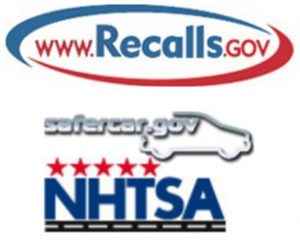Stricter regulations, standardization of parts, and new technologies have led automakers to  increase recalls in the U.S. in each of the last four consecutive years. According to JD Powers, drivers and vehicle passengers are at significant risk because more than 45,000,000 recalled vehicles manufactured between 2013 and 2015 have not had their defects remedied.
increase recalls in the U.S. in each of the last four consecutive years. According to JD Powers, drivers and vehicle passengers are at significant risk because more than 45,000,000 recalled vehicles manufactured between 2013 and 2015 have not had their defects remedied.
Data shows that the primary factors affecting recall completion rates are: vehicle age and type, number of cars involved in a recall, type of recall, parts shortages, and dealers not receiving parts in a timely fashion. Unfortunately, a high percentage of recalled products are never returned or repaired. Many consumers have either never heard about a recall or have failed to act on a recall. So where do consumers go and what can they do?
What To Do If You Have a Recalled Vehicle or Component
If you received a notice letter or have any questions at all, you should visit government websites such as:
The National Highway Traffic Safety Administration (NHTSA) provides recall information regarding vehicle and equipment campaigns from 1966 to the present. The campaigns include motor vehicle products which experienced a safety-related defect or did not comply with federal motor vehicle safety standards:
Here are some other important recall links:
- Recalls Look-up by Vehicle Identification Number (VIN): https://vinrcl.safercar.gov/vin/
- Recalls by Model Year, Make & Model: http://www-odi.nhtsa.dot.gov/owners/SearchSafetyIssues
- File a Vehicle Safety Complaint: https://www-odi.nhtsa.dot.gov/VehicleComplaint/
- Subscribe to Email Recall Alerts: http://www-odi.nhtsa.dot.gov/subscriptions/index.cfm
Consumers may also report suspected safety defects in their vehicle, vehicle equipment, and child safety seats by calling the NHTSA at 1-888-327-4236.
Murray Guari is here to help. If you have any questions about a potential recall, do not hesitate to call us at 561-366-9099.


